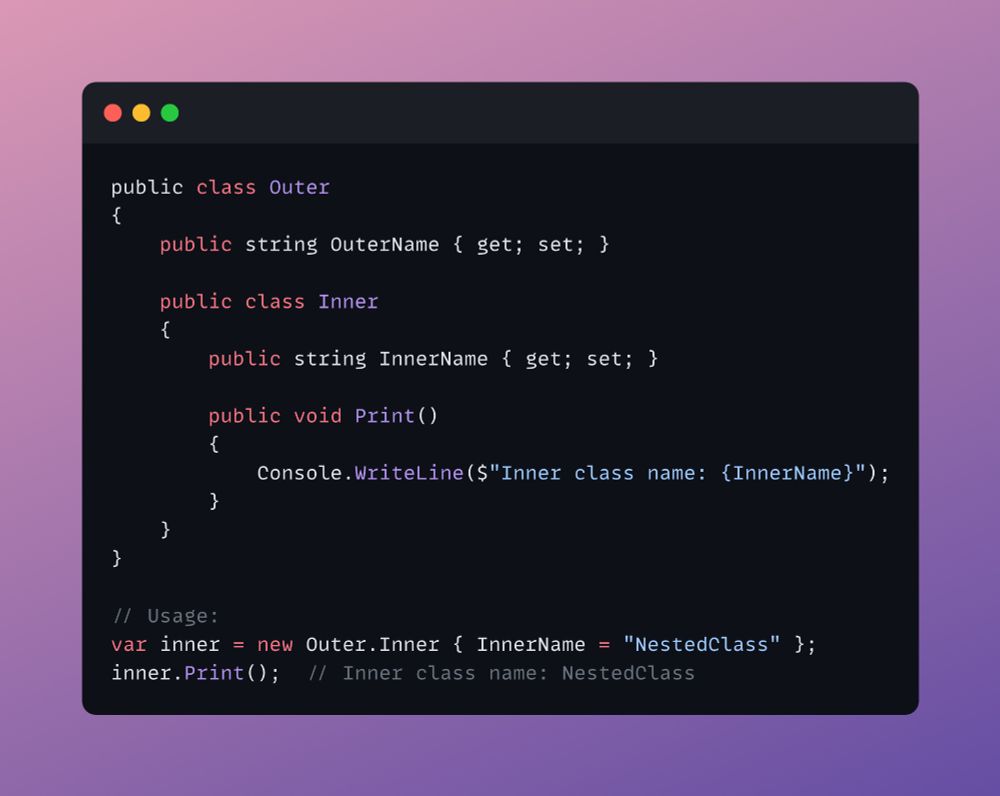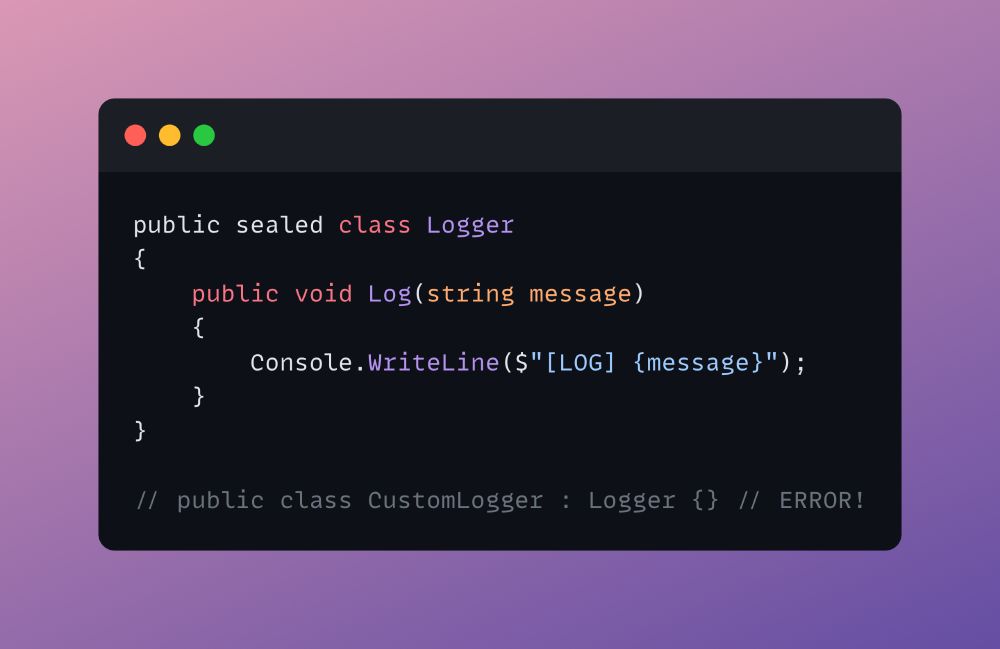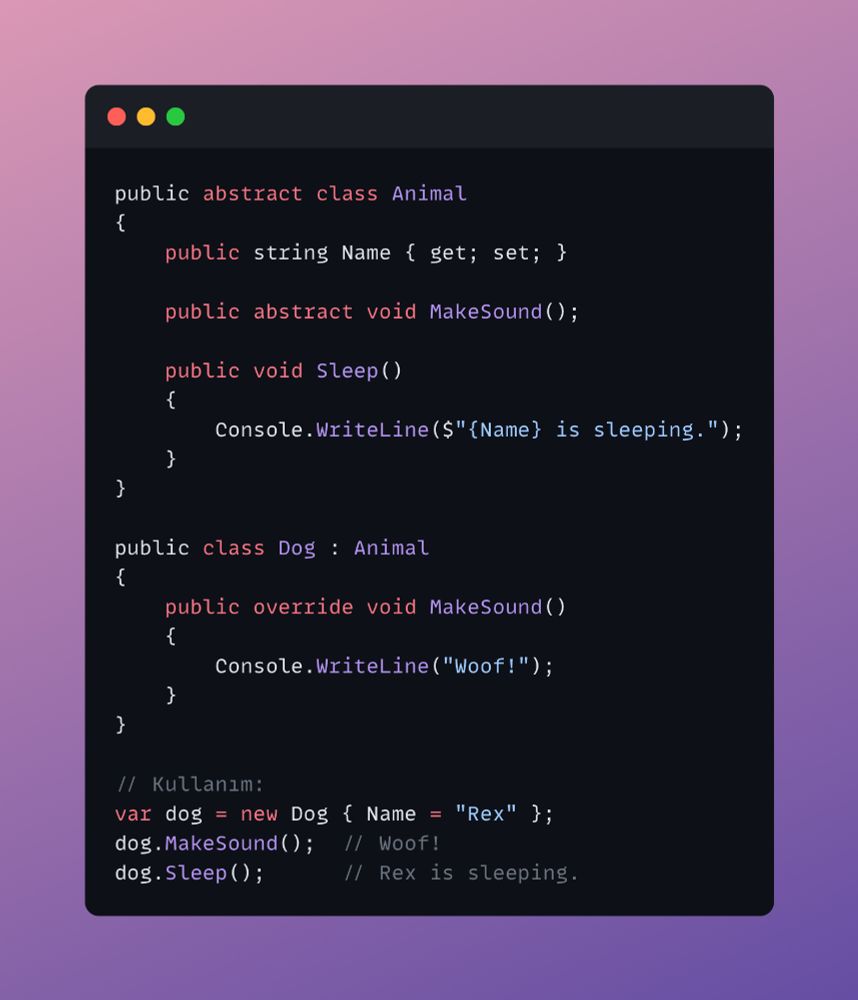
🚫 No face, just logic.
x.com/codewhisperdev
Use them wisely to keep your codebase clean, maintainable, and SOLID.
#CSharp #DevCommunity #CleanCode
Use them wisely to keep your codebase clean, maintainable, and SOLID.
#CSharp #DevCommunity #CleanCode
Class inside another class.
Can be used for tight coupling (e.g., helper classes for outer class).

Class inside another class.
Can be used for tight coupling (e.g., helper classes for outer class).
Split one class across multiple files.
Great for large codebases or designer-generated code.

Split one class across multiple files.
Great for large codebases or designer-generated code.
Can’t be inherited.
Used when you want to restrict extension.

Can’t be inherited.
Used when you want to restrict extension.
Only contains static members. Can’t be instantiated or inherited.
Perfect for utility/helper methods.

Only contains static members. Can’t be instantiated or inherited.
Perfect for utility/helper methods.
Use abstract when the class is meant to be inherited, not instantiated.
It can have both abstract (unimplemented) and concrete (implemented) methods.

Use abstract when the class is meant to be inherited, not instantiated.
It can have both abstract (unimplemented) and concrete (implemented) methods.
The most common type: public class MyClass { }
Supports inheritance, encapsulation, constructors, methods, fields.
Can be instantiated with new.

The most common type: public class MyClass { }
Supports inheritance, encapsulation, constructors, methods, fields.
Can be instantiated with new.
• Scalar functions run row by row = performance bottleneck
• Use inline expressions, computed columns, or TVFs (table-valued functions) for better scalability
• Scalar functions run row by row = performance bottleneck
• Use inline expressions, computed columns, or TVFs (table-valued functions) for better scalability
🔹 Clean Code: No need for callbacks or complex state management like with traditional async operations.
🔹 Clean Code: No need for callbacks or complex state management like with traditional async operations.
Benefits:
🔹Memory Efficiency: Only one item is in memory at a time, so it’s ideal for processing large datasets or streams.
Benefits:
🔹Memory Efficiency: Only one item is in memory at a time, so it’s ideal for processing large datasets or streams.
IAsyncEnumerable<T>: Enables you to stream data asynchronously without blocking threads.
🔹 Use yield return to return items one at a time.
🔹 Data is fetched lazily, so you only process what you need.
IAsyncEnumerable<T>: Enables you to stream data asynchronously without blocking threads.
🔹 Use yield return to return items one at a time.
🔹 Data is fetched lazily, so you only process what you need.

